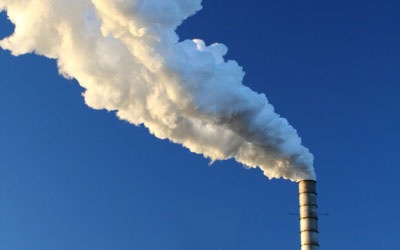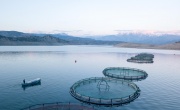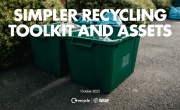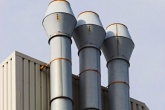Residual waste treatment expansion could set ceiling on UK recycling
The UK’s recycling rate could be limited to 63 per cent if residual waste treatment capacity exceeds the amount of residual waste by 2020/21, predicts a new report from Eunomia Research & Consulting.
The report finds that, since 2009/10, the UK has more than doubled its residual waste treatment capacity from 6.3 million tonnes to 13.5 million tonnes while over the same period of time the amount of residual waste suitable for treatment has fallen from 30 million tonnes per year to 26 million tonnes per year.
 If these trends were to continue up to 2020/21, it suggests, then the treatment capacity would outstrip the available residual waste, and it is feared that recyclable waste would be diverted to the residual waste treatment facilities to make up the shortfall in residual waste.
If these trends were to continue up to 2020/21, it suggests, then the treatment capacity would outstrip the available residual waste, and it is feared that recyclable waste would be diverted to the residual waste treatment facilities to make up the shortfall in residual waste.
The environmental consultancy’s twelfth Residual Waste Infrastructure Review makes the prediction based on data collected from all existing residual waste treatment facilities in 11 European countries – Belgium, Czechia, Denmark, France, Germany, Ireland, the Netherlands, Norway, Poland, Sweden and the United Kingdom – since 2009, when it started to track the development of residual waste treatment facilities.
The report’s warnings have not been universally welcomed by the industry, with the Environmental Services Association (ESA) calling the conclusion that too much capacity is being developed ‘galling’ at a time that the industry is calling out for more long-term infrastructure investment.
Need for change of waste infrastructure policy
Eunomia Senior Consultant and report author Harriet Parke said: “Our latest report shows that the UK continues inexorably towards the point where we have more residual waste treatment capacity than we need.
“If facilities already in construction are built, and only these, we think the UK could still recycle some 63 per cent of waste, but if just 40 per cent of what is in planning was also built, the recycling rate could be further limited to 57 per cent.”
European officials and elected members are currently negotiating future recycling targets, likely to apply to the UK after Brexit, with a figure between 60 and 70 per cent to be required by 2030. If Eunomia’s study is correct, this goal could be extremely difficult to reach.
Parke continued: “The new Secretary of State [Michael Gove] has signalled a renewed strategy on waste and resources: it could hardly be more timely to commit England, and the UK, to developing a resource efficient economy that focuses activity at the upper tiers of the waste hierarchy. This would help clarify to investors and developers just how tough competition for residual waste is likely to be in future, and signal a need to refocus funding and activity accordingly.”
Uncertain future
Eunomia’s report consists of two potential future scenarios. In scenario one, the UK sticks to current and planned EU recycling targets and further reduces the amount of residual waste arising, while in scenario two, the UK meets its target for household waste recycling for 2020, after which the recycling rates stay the same through until 2030, while there is a small increase in commercial and industrial (C&I) recycling rates.

Both scenarios include a figure of about two million tonnes of waste for ‘unavoidable’ landfill as some waste arises in remote areas without necessary logistics and waste treatment capacity while other waste, such as hazardous waste, may be unsuitable or unsafe for treatment.
It is important to note that both the scenarios were modelled on the basis of the UK adopting the targets and requirements of the EU’s Circular Economy Package, which, despite a distinct lack of enthusiasm from its ministers, the government assumes will still be adopted despite the UK’s impending departure from the EU.
Eunomia’s report also predicts that a ‘capacity gap’ will emerge in Northern Europe by 2030, with an excess supply of treatment capacity of 8.7 million tonnes, a significant reversal of the current situation, where waste arisings outweigh capacity by 57 million tonnes.
‘Flawed’ findings risk UK ‘sleepwalking into capacity crisis’
Contrasting completely with the stark message of the report, however the ESA, a trade association representing the UK’s resource and waste management industry, warned that, contrary to Eunomia’s findings, the UK was actually in danger of having insufficient capacity to deal with future residual waste arisings.
ESA Executive Director Jacob Hayler said: "Eunomia’s findings are flawed and have been contradicted by report after report from everyone else who’s looked at our residual waste treatment needs.
“Year after year these consultants have claimed that the UK was heading for overcapacity – its earlier reports suggested that we would already have reached overcapacity today – and it is galling that they continue to repeat the message when we are crying out for more investment in our industry. Their abilities to overstate available capacity and under-predict residual waste arisings are astounding.
“The consensus position on waste treatment is that we will end up over five million tonnes short of energy from waste capacity by 2030. This is what the government needs to understand if it is not to sleepwalk into a capacity crisis.”
However, stating his support for the report, Shlomo Dowen, National Coordinator of the UK Without Incineration Network, said: “Most reports on residual waste treatment capacity are commissioned by companies with a financial stake in investment in new waste incineration capacity, whereas Eunomia's reports are more independent.
“Eunomia's latest report confirms that we will soon have more incineration capacity than residual waste. However, this understates the problem because much of what is currently described as 'residual waste' can actually be recycled or composted. We already have more incineration capacity than we will have genuinely residual waste to burn, and so have already reached 'overcapacity' in the UK. We need to be recycling our waste, not wasting millions of pounds building yet more incinerators that will be redundant in a circular economy.”
You can read Eunomia’s Residual Waste Infrastructure Review on the company's website.








